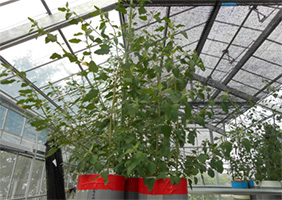Research Center for Ecological Application Systems
- KEYWORDS
- Landscape Design
- Urban Planning
- Heat Island
- ●Outdoor Heat Stress Mitigation and Landscape Research Project
Our laboratory promotes the study, planning sciences, and technical developments needed for the formation of urban environments within which human society and ecological systems can exist in harmony. To achieve these goals, our work and study methods aim at the creation of disciplines that combine sciences related to landscape and architectural planning, environmental greenery, and the preservation and promotion of health and hygiene in various ways. Our vision calls for the integration of the natural environment into all aspects of urban land use, including disaster prevention areas such flood and fire prevention, rainwater storage and circulation, and alleviation of the heat island phenomenon and the promotion of public health issues such as environmental cleanliness and recreation. Through study and experimental investigations, we will continue to advance the public interest in the functions use of natural environments.
Research staff
Visiting Professor
Center Director
Landscape Design

Professor
Environmental green space, public health

Professor
Landscape Ecology

Professor
Rijal Hom Bahadur
Architecture, Thermal Comfort

Visiting Researcher
Akihiko Horikawa
Landscape Design

Visiting Researcher
Masayo Yamasaki
Landscape Design

Professor
Advisor
Teruaki Irie
Tokyo University of AgricultureLandscape Design, Urban Planning,
Heat Island
Research Framework


